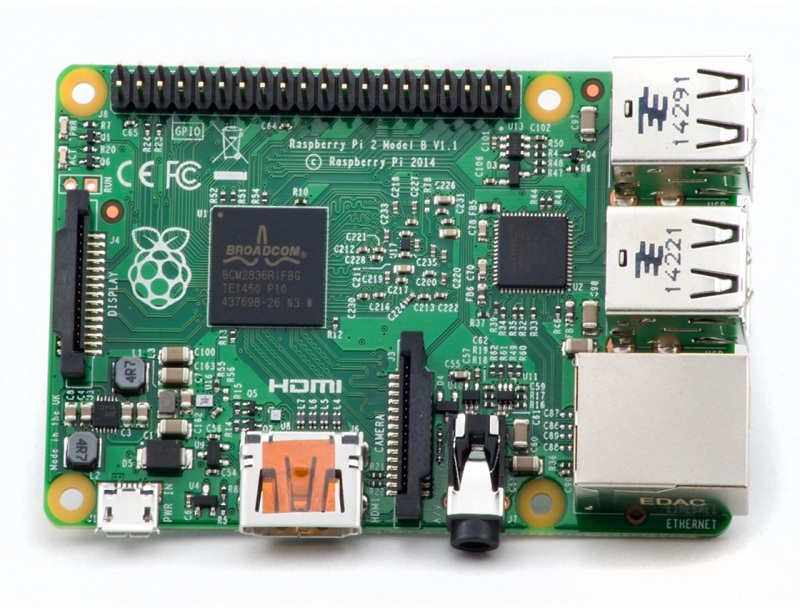Raspberry Pi (Model B 2 rev 1)
This tiny computer system has been likened to the origial BBC Microcomputer. Well, having spent many, many hours in the 1980's using the latter and quite a few hours of the 2013's on the former - I can dispel any such claims!.
However, they do have some things in common - they are great fun to use and both are an unparalled vehicle for learning about computer systems. Difference, well it's hard to know where to start - BBC RAM available 8 or 16KB for program code, the Raspberry PI, (who's name is generally truncated to 'Pi) has 512MB of on-board RAM, with a provision of off-board SD card to 32GB (putting this in perspective: 32,000,000,000/16,000 = 2 million times the RAM capacity). Then there's the clock speed, the BBC micro had a 1MHz clock, the Pi has a 700MHz clock, the ARM processor is an incredibly sophiscated device - not to mention the 'Pi has its own dedicated GPU (Graphics processor). The graphics capabilities are 'light years' apart!
Despite the complexity of the Pi, it is very accessible for beginners. The Linux operating system support several excellent script languages which can be used for application and utility writing and even games design. The shell can be accessed via a remote terminal allowing the Pi to sit in isolation, without keyboard, mouse or monitor.
I will get down to writing about the uses I have found for the Pi, the trials and tribulations of getting to grips with the version of Linux that is often preferred for use with the Pi (ie Debian - Squeeze) and it's incredinly structured and comprehensive command structure, much of which has its roots in the Unix OS.
In brief, I have transferred my Webserver from a conventional PC to a Pi, (dissipates less than 2 watts as opposed to about 100W). This also has a temperature logging feature (yes, I know that's pretty naff, but it's still fun to see the temperature in you back garden when your abroad!). I have a second Pi that streams video from a webcamera - a virtual 'IP Camera' setup. I use this to view my radio transceiver front panel when working remotely (HRD) - which allows me to check that the transceiver has not been left 'on' due to spurious switching.
I have now bought another Raspberry Pi - to mess about with. I managed to stream video fom a conventional web-camera, but the maximum resolution was just 320x240. More recently I have used a 'camera module' which was designed for use with the Pi. Streaming 640x480 pixels, about 15-20fps of high quality video is possible. I think a pan & tilt system (built around conventional model servos) is an essential addition for my next project.
OK, there's been much more going on in the 'workshop', but that's enough for now. Do get a Raspberry Pi - they're available for about £30. BTW, I found the receipt for my BBC Model B last week, it was £299.00.....
